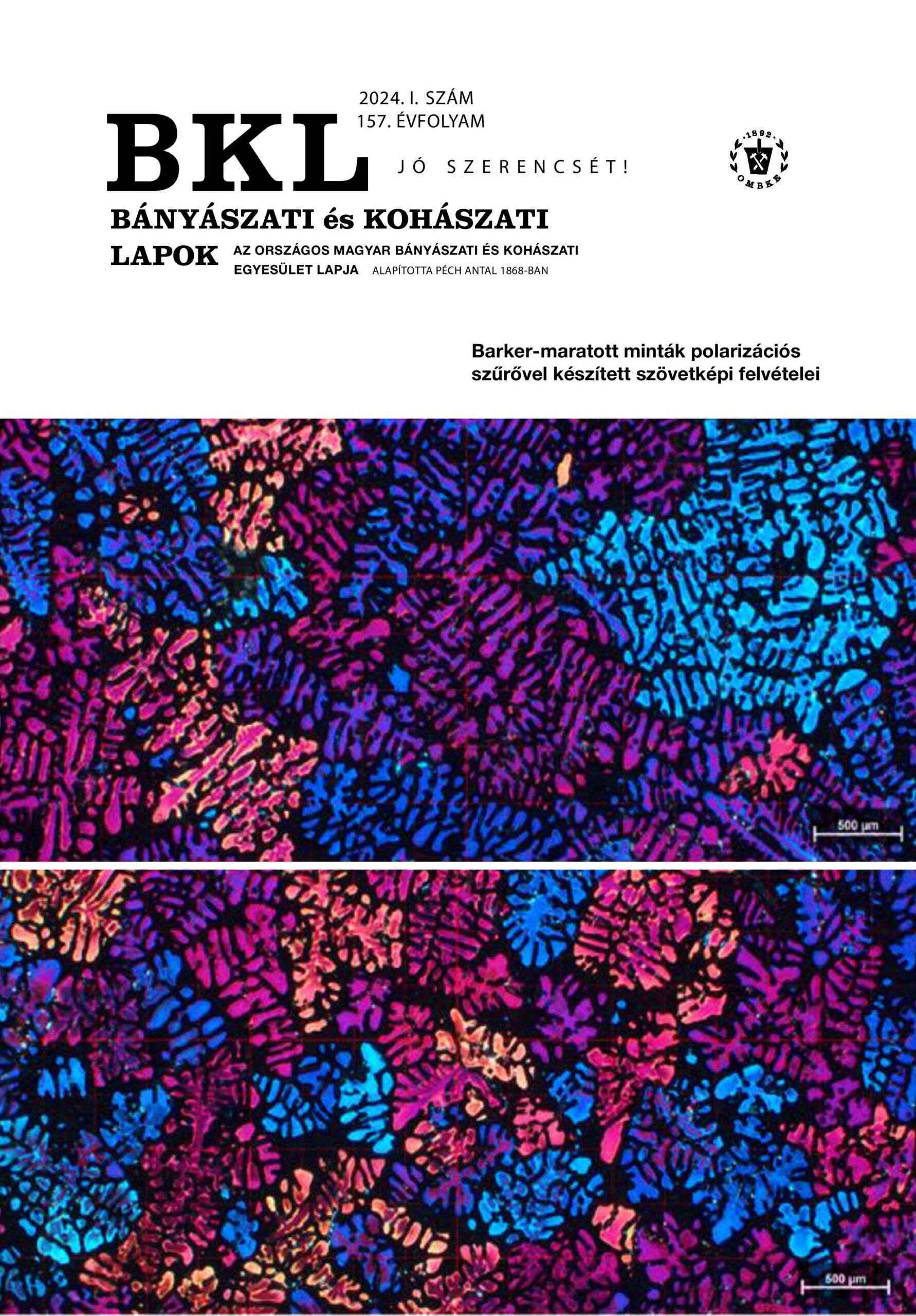Comparative analysis of the eff ect of diff erent fl uxes and Al-5%Ti-1%B master alloy addition on the melt quality of EN AC-45500 alloy
Abstract
Rotary degassing coupled with the addition of diff erent fl uxes is the most common melt treatment method in aluminum foundries, due to its high effi ciency in inclusion removal and the possibility of grain refi ning. In this study, the eff ect of diff erent fl uxes and master alloy addition was investigated on the melt and casting quality in diff erent stages of the melt preparation. Four experiments were conducted, which are labeled as “A”, “B”, “C” and “D”. In all cases, EN AC-45500 alloy (the standard composition in weight percentage is 7% Si, 0.5% Cu, 0.4% Mg, 0.12% Ti) was melted in a shaft-type melting furnace and then approximately 1000 kg was poured into a resistance-heated holding crucible furnace. In case “A” we applied a melt cleaning fl ux, whereas in case “D” we used the same fl ux combined with the addition of Al-5%Ti-1%B grain re fi ning master alloy. In cases “B” and “C”, cleaning and grain refi ning fl uxes from diff erent suppliers were used. Each experiment consisted of 5 melt treatment cycles with 9 minutes long treatment time, the N2 purging gas fl ow rate was 20 ± 2 l/min and the pressure was equal to 5 ± 1 bar. The rotational speed of the impeller was 490 rpm during the vortex formation and 380 rpm in the degassing phase. 800 ± 30 g of the granulated fl uxes was added in all cases. The melt cleanliness and grain refi nement were examined in diff erent stages of the melt preparation; after pouring it into the crucible, right after and 15 minutes after the melt treatment, and fi nally before the next pouring into the holding furnace (approximately 200 kg residual melt at the bottom of the crucible). During the experiments, the evolution of the inclusion content was investigated by the fracture surfaces of K-mold samples. The mechanical properties (elongation, yield strength, ultimate tensile strength) were measured by tensile test of samples machined from the castings, and the quality index was also calculated. The oxide inclusions found on the fracture surfaces of the K-mold samples were examined by scanning electron microscopy (SEM) and energy dispersive spectroscopy (EDS).
The degree of grain refi nement and the nucleation temperature were investigated by thermal analysis in diff erent stages of the melt preparation. The exact grain size was measured by image analysis of the polished and Barker-etched thermal analysis samples. The susceptibility to pore formation was compared by Density Index samples, X-ray analysis, and metallographic investigation of polished surfaces from the castings. The chemical composition of the melt was measured by optical emission spectroscopy (OES) in diff erent stages of the melt preparation, while the phase composition of the applied fl uxes was analyzed by X-ray diff raction (XRD).
References
G. Gyarmati, L. Bogoly, M. Stawarz, G. Fegyverneki, M. Tokár: Grain refi ner settling and its eff ect on the melt quality of aluminum casting alloys. Materials, 2022/15-7679. https://doi.org/10.3390/ma15217679
J. Campbell: Complete Casting Handbook 2nd Edition - Metal Casting Processes. In: Metallurgy, Techniques and Design. Butterworth-Heinemann, Boston, 2015.
J. Wannasin, D. Schwam, J. F. Wallace: Evaluation of methods for metal cleanliness assessment in die casting. Journal of Materials Processing Technology, 2007/191, 242-246. https://doi.org/10.1016/j.jmatprotec.2007.03.013
S. W. Hudson, D. Apelian: Inclusion detection in molten aluminum - Current art and new avenues for in situ analysis. International Journal of Metalcasting, 2016/10, 315-321. https://doi.org/10.1007/s40962-016-0030-x
F. C. Robles-Hernandez, J. M. H. Ramírez, R. Mackay: Al-Si Alloys - Automotive, Aeronautical, and Aero space Applications, Springer International Publishing, 2017, 237. https://doi.org/10.1007/978-3-319-58380-8
L. Liu, F. H. Samuel: Eff ect of inclusions on the tensile properties of Al-7%Si-0.35%Mg (A356.2) aluminium casting alloy. Journal of Materials Science, 1998/33, 2269-2281. https://doi.org/10.1023/A:1004331219406
P. J. Szabo, I. Kardos: Correlation between grain orientation and the shade of color etching. Materials Characterization, 2010/61, 814-817. https://doi.org/10.1016/j.matchar.2010.05.005
Standard Test Methods for Determining Average Grain Size - ASTM International, Designation: E112−12, 2013
A. M. Samuel, F. H. Samuel: Various aspects involved in the production of low hydrogen aluminium castings. Journal of Materials Science, 1992/27, 6533-6563. https://doi.org/10.1007/BF01165936
D. Dispinar, J. Campbell: Critical assessment of reduced pressure test - Part 1. International Journal of Cast Metals Research, 2004/17, No. 5, 280-286. https://doi.org/10.1179/136404604225020696
R. Gallo D. Neff : Aluminum Fluxes and Fluxing Practice, ASM Handbook, 2008, Vol. 15 Cast., 230-239. https://doi.org/10.31399/asm.hb.v15.a0005300
T. A. Utigard, K. Friesen, R. R. Roy, J. Lim, A. Silny, C. Dupuis: The properties and uses of fl uxes in molten aluminum processing. JOM, 1998/50, 38-43. https://doi.org/10.1007/s11837-998-0285-7
M. Máté, M. Tokár, G. Fegyverneki, G. Gyarmati: The comparative analysis of the inclusion removal effi ciency of diff erent fl uxes. Arch. Foundry Eng., 2020/20, 53-58. https://doi.org/10.24425/afe.2020.131302
C. Li, J. Guo Li, Y. Zhe Mao, J. Cheng Ji: Mechanism to remove oxide inclusions from molten aluminum by solid fl uxes refi ning method. China Foundry, 2017/14, 233-243. https://doi.org/10.1007/s41230-017-7005-2



